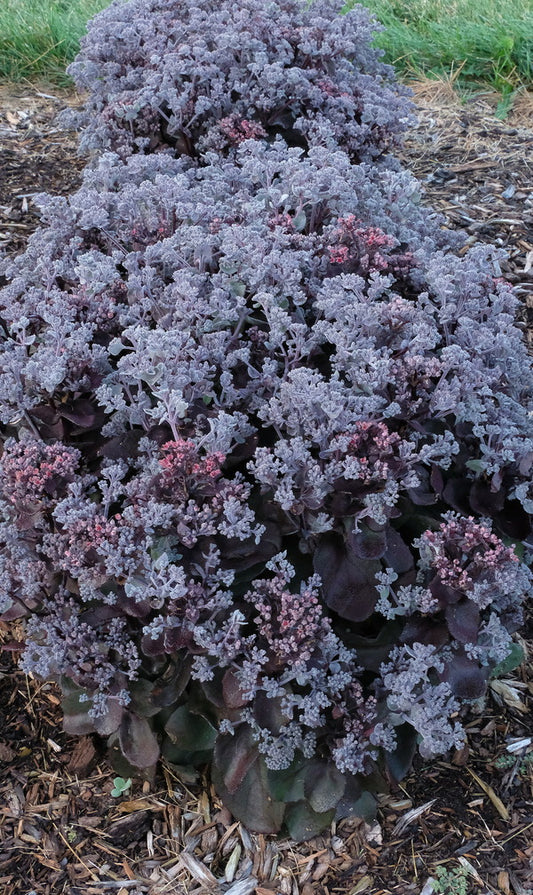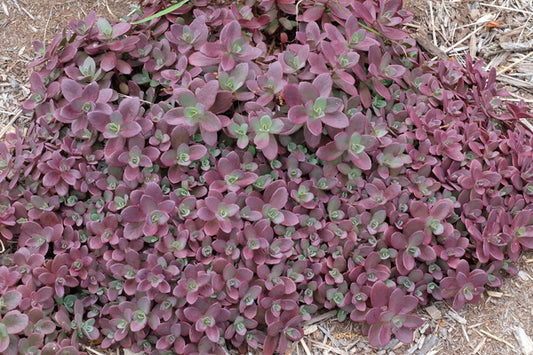As a group, stonecrop prefers well-drained, moist soils, although many are highly drought-tolerant. In nature, most sedums occur in light shade or partly sunny sites, while a few are also well-adapted to full sun.
-
Sedum 'Back in Black' PP 33,632
Item #: 16516
Zones: 3a to 8b
Dormancy: Winter
Height: 24" tall
Culture: Sun
Origin: Hybrid
Pot Size: 3.5" pot (24 fl. oz/0.7 L)
Regular price $19.00Regular priceUnit price per -
Sedum 'Firecracker' PP 26,595
Item #: 12731
Zones: 4a to 8b
Dormancy: Evergreen
Height: 3" tall
Culture: Sun to Part Sun
Origin: Hybrid
Pot Size: 3.5" pot (24 fl. oz/0.7 L)
Regular price $21.00Regular priceUnit price per
More Information About Sedum
The genus Sedum is a diverse group that includes some of our most durable garden perennials. Most sedum plants are known for their colorful, fleshy, succulent foliage and yellow, pink or white, butterfly-attracting flowers. Sedum foliage color can include green, purple, blue, yellow, or even variegated with multiple colors. In the autumn sedum leaves may take on reddish or copper hues.
Types of Sedum Stonecrop
There are two basic body plans for sedum plants, the ground-hugging, mat-forming sedums (i.e., Sedum tetractinum) and the tall, clump-forming sedums (i.e., Sedum tatarinowii). Both types of sedum make excellent groundcover garden plants as well as attractive container plants. The low growing sedum are perfect plants for green roofs. Try pairing tall sedum with plants like setcreasea, kniphofia, hemerocallis, salvia and euphorbia. The mat-forming sedum groundcovers look great filling in the ground beneath things like paeonia, setcreasea, graptopetalum, musa, rudbeckia and iris.
Where To Plant Sedum
As a group, sedum stonecrop prefers well-drained, moist soils, although many are highly drought-tolerant. In nature, most sedums occur in light shade or partly sunny sites, while a few are also well-adapted to full sun situations. Their xeric nature makes sedums popular for use in rock gardens, roof gardens, wall gardens, and living wreaths. When you are ready to buy sedums for your perennial garden, check out our list of sedums for sale, which includes many new selections.
For additional tips on how to grow and care for sedum, check out our article Top Tips for Growing Sedum.



